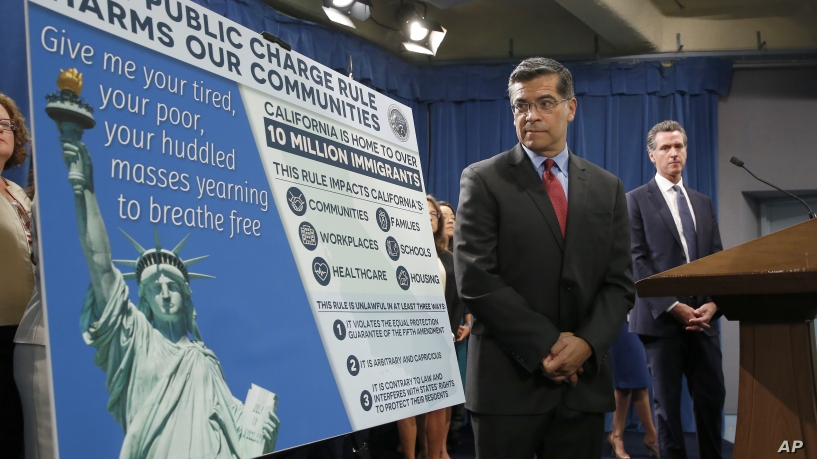NOTE FROM THE EDITOR:
Dear readers:
As you have been hearing the drum of war in the mainstream lately about the US about to attack Iran for doing this and doing that, well, if you don’t have an idea of your own of why should we attach the Persian nation, here’s a well-researched article written by investigative journalist, James Corbett, of what is really happening behind real deal in wanting war with Iran. – Marvin Ramírez.
by by James Corbett
corbettreport
“Be afraid!” say the repeaters of mockingbird media. Afraid of who? Afraid of Iran, of course.
Oh, haven’t you heard? The Iranian government’s stockpile of enriched uranium is about to surpass 300 kilograms! And Iran’s store of heavy water is about to surpass 130 metric tons! Don’t you understand? This will exceed the limits on these materials set out in the Iran nuclear deal, the Joint Comprehensive Plan of Action (JCPOA)! And the dastardly Iranian government is not only embarrassed by these actions, but openly taking steps to end (some of) their commitments under the JCPOA!
Sounds chilling, doesn’t it? But there’s one little disclaimer that seems missing from a lot of the MSM’s scaremongering coverage of these developments: None of this has anything to do with an offensive nuclear weapons program.
Confused? Of course you are. The highly-technical details of the 159-page nuclear agreement were never meant to be scrutinized by (much less understood by) the average Joe Sixpack and Jane Soccermom. Words like “enriched” and “highly enriched,” “heavy water” and “tritium,” “nuclear program” and “nuclear weapons program” are thrown around by the media as if these terms are all the same, even though they describe fundamentally different materials and processes. And the whole point is to make the public afraid of a nuclear weapons program that both US and Israeli intelligence has confirmed doesn’t exist.
So what’s the real story on the Iran nuclear deal?
Well, as I had cause to point out on The Corbett Report podcast quite recently, defining our terms is the first step toward understanding the world. So let’s do some defining.
First, “enrichment.” As the World Nuclear Association explains:
Natural uranium contains 0.7 percent of the U-235 isotope. The remaining 99.3 percent is mostly the U-238 isotope which does not contribute directly to the fission process (though it does so indirectly by the formation of fissile isotopes of plutonium). Isotope separation is a physical process to concentrate (‘enrich’) one isotope relative to others. Most reactors are light water reactors (of two types—PWR and BWR) and require uranium to be enriched from 0.7 percent to 3-5 percent U-235 in their fuel. This is normal low-enriched uranium (LEU). There is some interest in taking enrichment levels to about 7 percent, and even close to 20 percent for certain special power reactor fuels, as high-assay LEU (HALEU).
Note that there is a large difference between low-enriched uranium (less than 20 percent U-235) used for fuel in nuclear power plants and research reactors, and high-enriched uranium (over 90 percent U-235) used for nuclear weapons. One guess which kind Iran is producing. That’s right: low-enriched uranium! To be precise, 3.67 percent U-235 enriched uranium, also known as ” not even close to being used in a nuclear weapon” enriched uranium.
Sadly, if predictably, this distinction seldom makes it into media reports concerning Iran’s “threats” to break the 300 kilogram stockpile limit. For every article specifically noting that Iran is producing “low-enriched uranium,” there are a hundred articles that elide this fact by merely referring to it as “enriched uranium.”
Take this gem from the Big Brother Corporation, for example: “Enriched uranium is used to make reactor fuel but also nuclear weapons.” That kind of “journalism” is precisely what enables the war hawks to get away with their lies.
Then what about “heavy water?” As the Wide Asleep in America blog detailed in a post on misleading reporting about the Iran nuclear deal:
“Heavy water is actually just a denser form of normal water, containing a hydrogen isotope called deuterium, which acts as both a moderator and coolant in the nuclear fuel process. It is not fissile material. It poses absolutely no danger and has no military capabilities. It cannot make bombs, nor is it a necessary component of the bomb-making process. Heavy water can literally be consumed just as regular H2O, although that would be a particularly pricey way to quench one’s thirst.”
In other words, heavy water is not radioactive and, let’s reiterate, it “cannot make bombs, nor is it a necessary component of the bomb-making process.” It is, however, a key ingredient in heavy water reactors.
Why, then, does the Iran deal set a limit on heavy water storage? Because at the time that the JCPOA was being negotiated, the Iranians were working on building a research reactor, the Arak Nuclear Plant, which was to be a natural uranium heavy water reactor. While the heavy water itself is not militarily capable, the concern at the time was that the then-still-under-construction Arak reactor could be used to breed weapons-grade plutonium from non-enriched uranium.
So there you go. Clearly the Iranians are stockpiling heavy water as part of their plan to produce plutonium for nuclear weapons, right? Wrong. Firstly, the Arak plant never had a so-called “hot cell facility” that could separate plutonium from the reactor’s irradiated fuel. And secondly (but rather more importantly), Iran removed the reactor core from the Arak plant in 2016 and filled it with concrete. That’s right, they don’t even have a heavy water reactor, let alone the ability to separate plutonium from such a reactor, let alone the intention to do so.
So why are they “stockpiling” heavy water and uranium, anyway? Because they can’t get rid of it anymore. As the Moon Of Alabama blog points out:
“When the Trump administration left the nuclear agreement a year ago it renewed sanctions on Iran’s nuclear program. But it also issued waivers for the export of heavy water and enriched uranium. Iran continued to sell these products or to stockpile them outside of the country.”
But then, in May of this year, the US State Department suddenly stopped issuing these waivers. As a result, for the past two months Iran has had no legal way to offload its extra heavy water and uranium.
This is why we are now inundated with the “Iran hell-bent on breaking the agreement” stories. What’s more, Iran’s current conundrum is the perfectly predictable result of State having halted those waivers. Pompeo and the war cabal knew that these pressures they exerted would force Iran into non-compliance. That’s precisely why they did it.
So let’s get this straight:
- Iran is “stockpiling” uranium and heavy water not by choice, but because they are legally forbidden from doing anything else with it.
- They are not “stockpiling” highly-enriched uranium for a nuclear bomb, but low-enriched uranium for power plants.
- They do not even have a heavy water reactor, let alone the facilities that would be required to separate plutonium out of that reactor.
- Iran is in violation of the JCPOA because they literally cannot comply with it anymore.
- The US pulled out of the JCPOA anyway, which raises questions as to why the US is interested in Iranian compliance with the deal at all.
- Oh, and let’s not forget that not only has the IAEA repeatedly confirmed that Iran never diverted any nuclear material into any military program, but the US intelligence community itself conceded in 2011 that Iran was not trying to build a nuclear bomb. (Bonus: even the Mossad made an assessment in 2012 that Iran was “not performing the activity necessary to produce weapons.”)
Alright, enough of this nonsense. We all know that this is not really about the JCPOA or Iran’s compliance or non-compliance with that agreement. Nor is this about the threat of a non-existent nuclear weapons program. No, this is about ginning up another phony casus belli—a convenient excuse for war that the public might buy into more readily than the recent ridiculous false flag shenanigans in the Gulf of Oman.
For those who may still be naïve enough to think that we can be saved from the warmongers by a cool and level-headed Congress, here’s a reality check: Congress has completely abrogated their constitutional authority to declare war. Famously, the US has never formally declared war since WWII (despite having been in a few “kinetic military actions” since then), and since 2001 and the Authorization for Use of Military Force (AUMF), whatever warmongers happen to be populating the White House have had carte blanche to use any excuse to go after any perceived terrorist threat anywhere in the world at any time with whatever military response they like.
And don’t think the current clique of neo-neocons in the Trump administration won’t abuse this power. As Heather Brandon-Smith notes in her article on the subject:
“Now we know that the Trump Administration is looking to use it [the AUMF] for its own means as well. After a grilling by Senator Rand Paul during an April Senate hearing, Secretary Pompeo refused to concede that the 2001 AUMF would not apply to Iran. Despite President Trump’s State of the Union declaration that ‘great nations do not fight endless wars,’ with every passing day the administration continues to inch towards conflict with Iran—and using the 2001 law to justify it.”
It’s hard to talk about the imminent “kinetic military action” with Iran without sounding like a broken record. Many have been warning about it since the days of Bush 43 and the original neocon crew. But just because you’ve heard it before doesn’t mean it’s not worth talking about anymore. On the contrary, as I argued 12 years ago and as seems even more evident today: WWIII Starts in Iran.
Don’t fall for the simplistic tricks that are being used to lead the public into that war.






